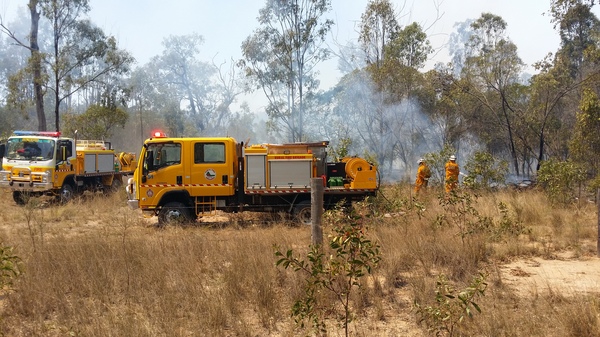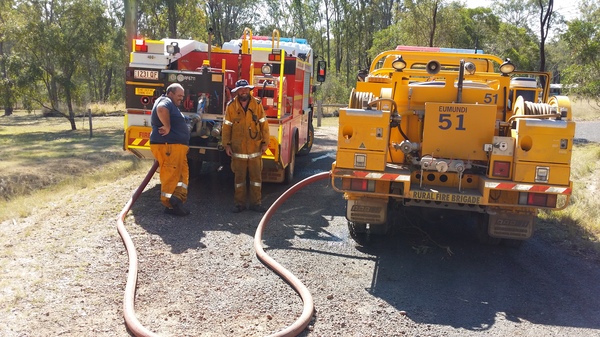By ANDREW BELL
It was a hot Friday afternoon in the school holidays when the Doonan Rural Fire Brigade got the call to join the strike team and head to Kingaroy early the next morning to help with a wild fire on a property.
Along with appliances and members from neighbouring Sunshine Coast brigades of Eumundi, Ilkley and District, Palmwoods, Tinbeerwah, Black Mountain and Kureelpa, three members hurriedly packed a bag, set ‘record’ for the Grand Finals, kissed the dog, patted the wife, and jumped into one of the yellow trucks bound for Kingaroy.
The fire was successfully brought under control with no major loss to property or pasture and a number of other incidents in the area were also ably dealt with.
The days were long, starting out early and not finishing until well past 8pm but all teams returned home on the following Monday, safe and sound.
So, what is a strike team and why are they formed?
Simply put, strike teams are groups of yellow fire brigade vehicles that are crewed with volunteer members that are deployed out of their usual area of operation to areas in need.
Also, urban ‘Red’ appliances and crews can be deployed to help out where there may be the potential for structural fires.
Crews come under the control of a local incident officer who is responsible for deploying the appliances to areas of need and ensuing the logistics of the operation are in order.
One of the most important aspects of this function is local knowledge, identifying unmarked tracks and fire breaks, natural hazards and, of course, where water can be supplied to.
They can also request additional crews, aircraft support and heavy plant, such as graders and bulldozers, to help bring the fire under control.
Strike team crews are housed in the local community, usually a motel and meals in the field are provided in bagged or takeaway form.
Strike teams form an essential part of the arsenal to fight fires in rural Queensland and those volunteers that man them always come away with a sense of achievement and worth.
It’s important for drivers to remember not to attempt to overtake a whole strike team because the convoy can be quite long.
They should be aware that these little yellow trucks are carrying large loads of water and can’t stop easily for a car.
For their safety and that of the brigade, other road users should be cautious around yellow trucks.
They should not drive over hoses or witches’ hats, they should drive carefully past any area of operation, be patient when the brigade is moving appliances and don’t forget brigades are made up of volunteers who have left their homes, families and jobs to support the wider community.








